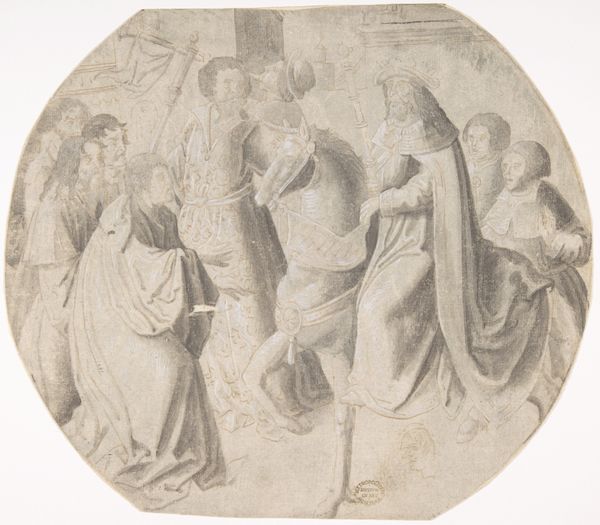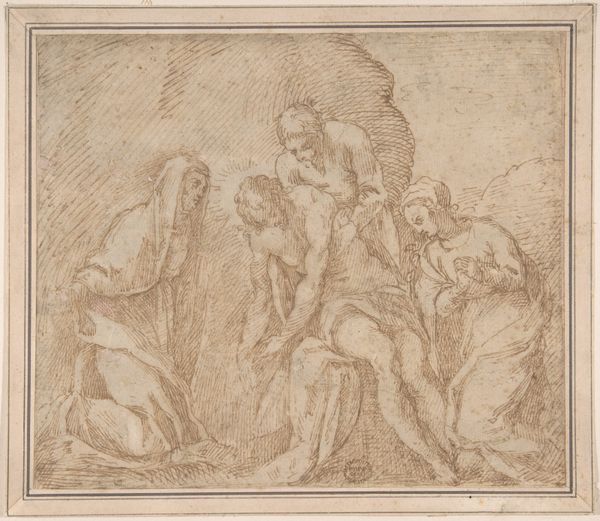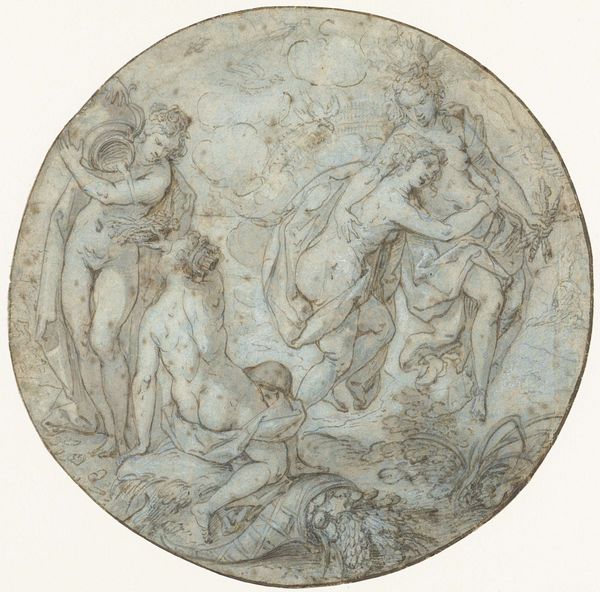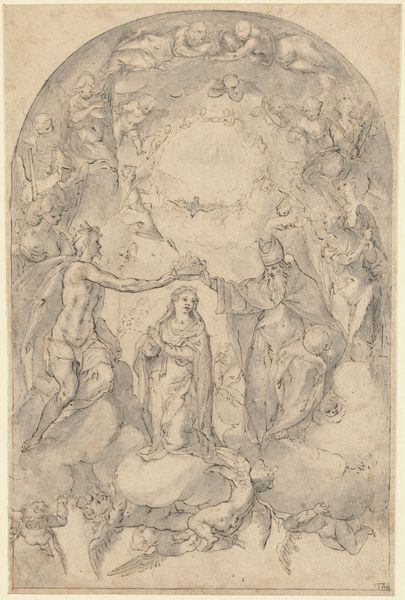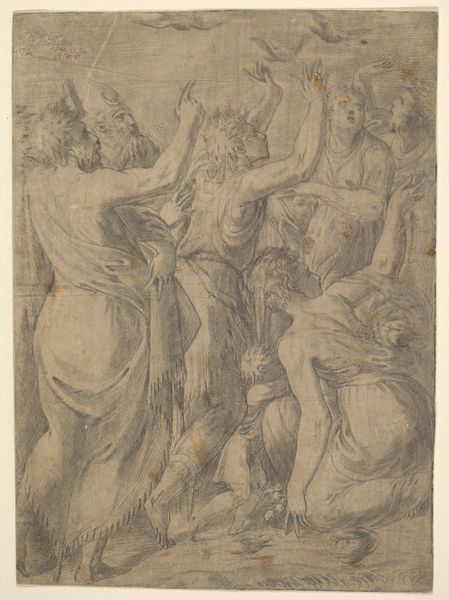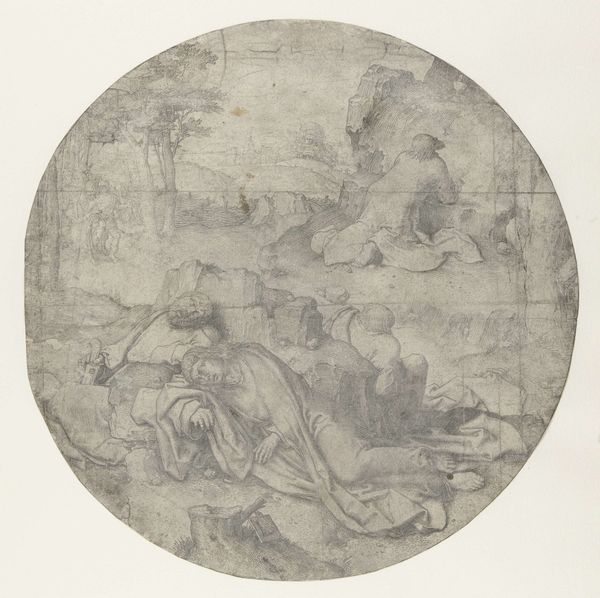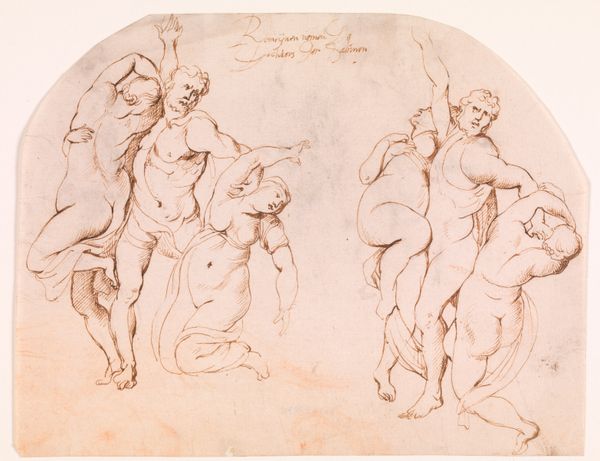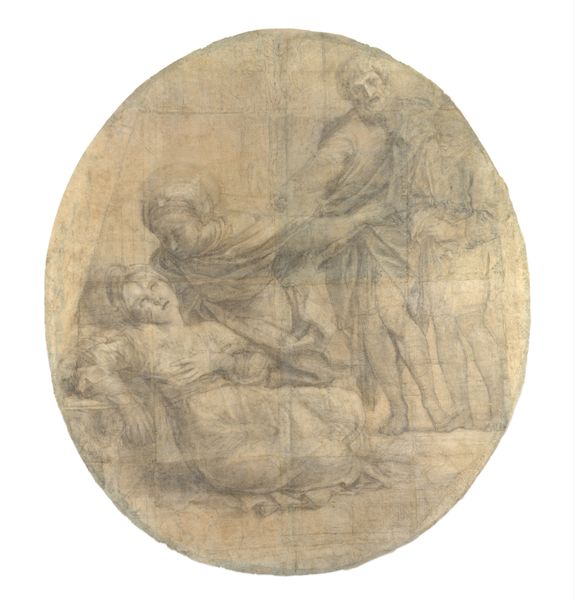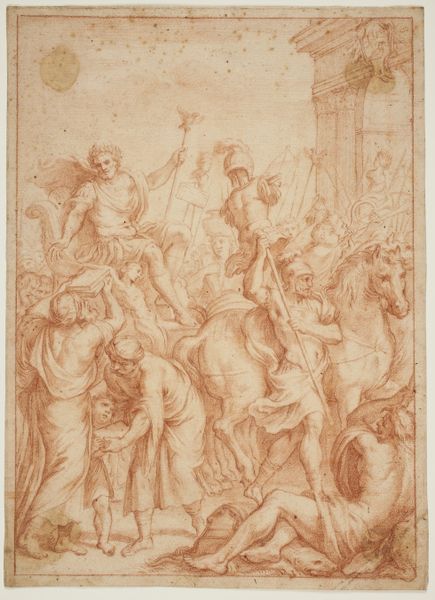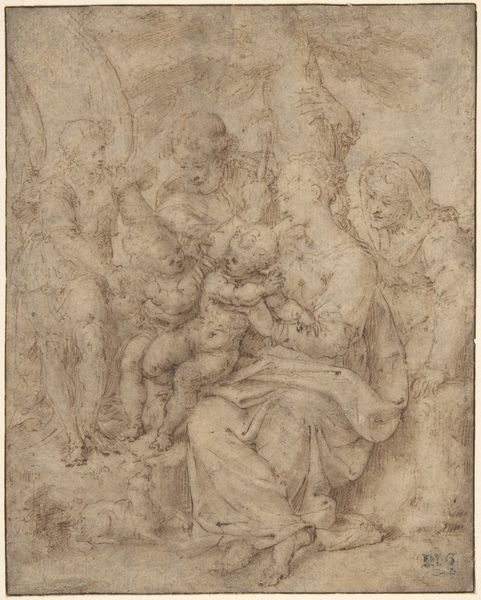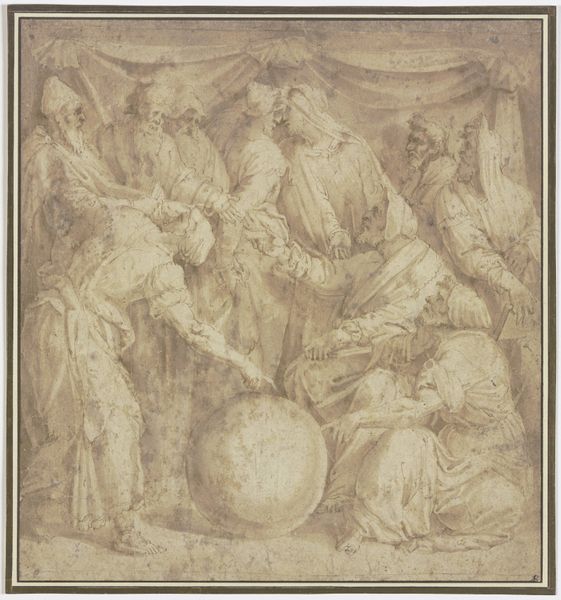
drawing, print, charcoal
#
drawing
#
allegory
# print
#
charcoal drawing
#
figuration
#
charcoal
#
italian-renaissance
#
nude
Dimensions: 7 5/8 x 7 5/8 in. (19.3 x 19.3 cm) Diameter
Copyright: Public Domain
Curator: Right, let’s have a closer look. This is "Three Allegorical Figures in a Roundel" a charcoal drawing by Battista Franco, probably dating from between 1510 and 1561. It is currently housed here at the Metropolitan Museum of Art. Editor: My immediate thought is, 'Wow, that circle just *contains* the scene so perfectly.' It’s like looking into a divine snow globe of smoky grace. Curator: Roundels, or 'tondi', were a very fashionable format during the Renaissance. They demanded a certain level of compositional ingenuity from the artist, fitting the figures within a predefined space. Editor: Absolutely, and Franco's mastery of charcoal creates this otherworldly softness. The light feels almost… inhaled, not illuminated. Curator: Indeed. Note the strategic use of hatching and cross-hatching to build form and volume with only charcoal and a touch of chalk for highlights. You can almost trace the labor-intensive nature of its crafting. These weren't mass-produced prints but individual artworks intended for close study and contemplation. Editor: It’s intriguing how they used to depict nudity so… cerebrally. The naked body now has a completely different symbolism! Curator: The Renaissance employed allegory consistently in its art, especially drawing inspiration from classical sources. Franco also evokes this era using three iconic figures, likely intended to represent abstract ideas. Their placement too…it is worth observing what materials they are holding, and what garments, too! The wreaths of foliage also invite reflection. Editor: Those ethereal beings hovering just beneath the figures add a whole new layer. Maybe the fleeting nature of those ideas? Curator: It certainly asks questions about the permanence and substance of ideals. Editor: Overall, considering this piece, its materials, and their socio-historic background, really allows one to connect with what they are experiencing. Curator: For me too, it offers a beautiful and unique intersection of the divine and the human, all captured so simply.
Comments
No comments
Be the first to comment and join the conversation on the ultimate creative platform.
